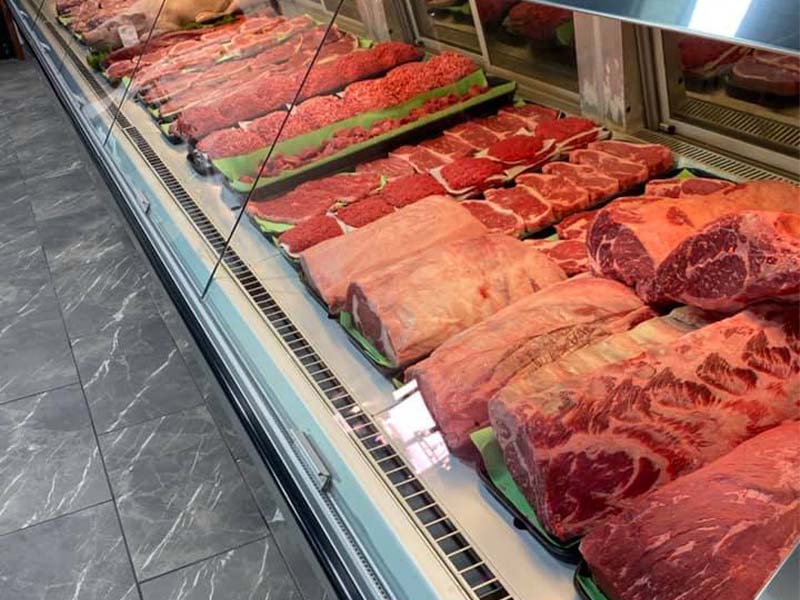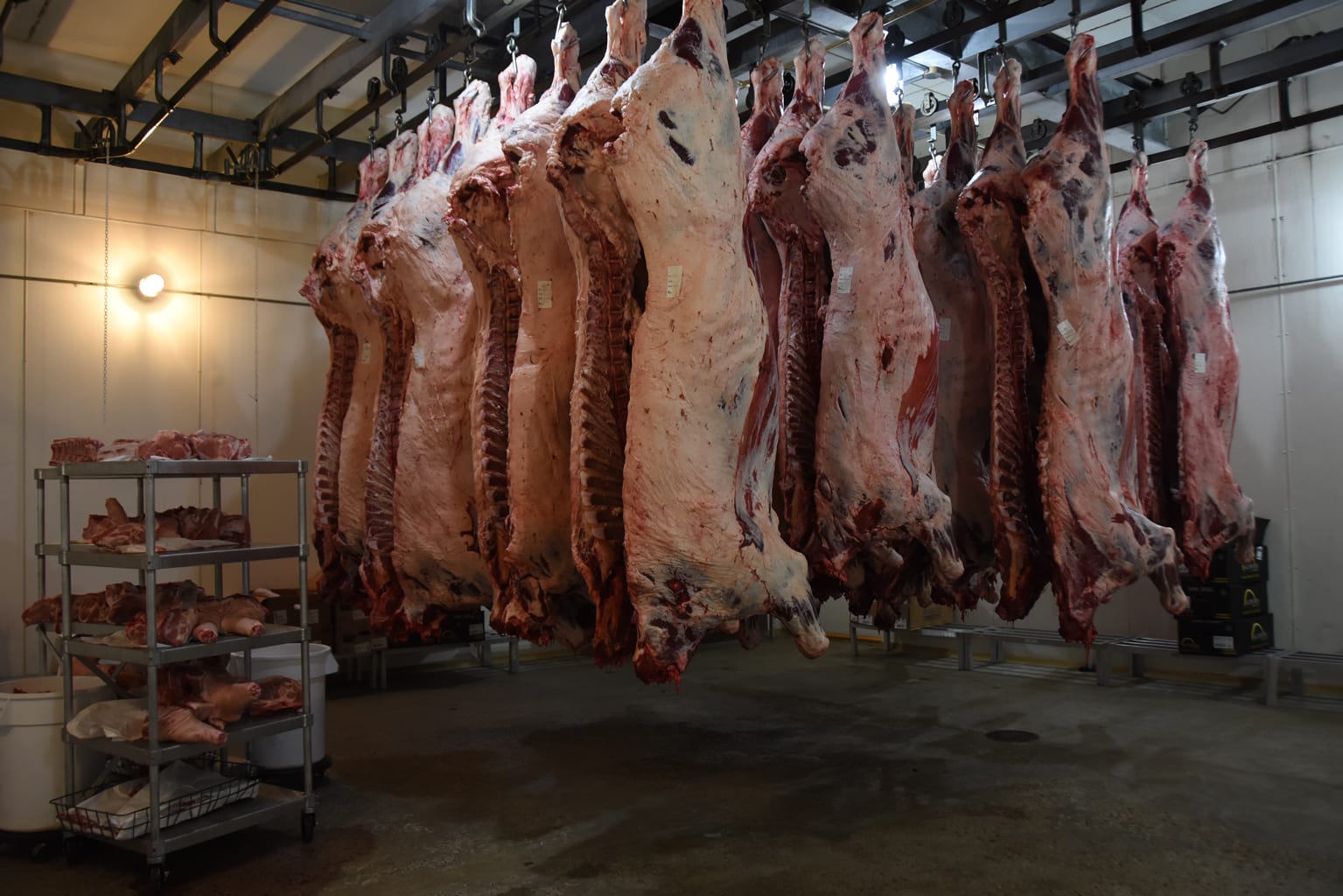Top Reasons to Patronize Bagley Farms Meat Market Edwardsville IL for Costs Meats
Top Reasons to Patronize Bagley Farms Meat Market Edwardsville IL for Costs Meats
Blog Article
Discover the Art of the Butcher's Cut in a Modern Meat Market
In the ever-evolving landscape of modern-day meat markets, the butcher's cut has actually transcended its conventional origins, combining olden craftsmanship with modern practices. Today's butchers are not merely processors of meat; they are knowledgeable craftsmens who highlight sustainability and ethical sourcing. Their know-how in picking and preparing cuts customized to specific cooking demands uses an unparalleled dining experience. Yet, what absolutely sets the contemporary butcher apart is their capability to build a much deeper connection between consumers and the origins of their meat. Just how do these masters balance tradition with development, and what effects does this have for the future of meat usage?
Development of Butchery Techniques
The evolution of butchery techniques mirrors an abundant tapestry of innovation and adaptation driven by advancements in technology, changes in customer need, and a much deeper understanding of meat science. Historically, butchery was a craft gave via generations, with methods refined over centuries to make the most of yield and flavor. Nonetheless, the commercial transformation ushered in automation, transforming traditional practices and making it possible for large processing.
The mid-20th century saw butchery strategies further refined by clinical understandings right into muscle mass biology and meat aging, boosting both tenderness and taste. Technologies like vacuum cleaner product packaging and refrigeration extended item shelf-life, enabling butchers to diversify offerings and enhance quality assurance. This duration additionally noted the increase of specialized equipment, such as band saws and meat slicers, which boosted accuracy and efficiency in meat processing.

The 21st century has actually introduced digital modern technology into the butchery world. Electronic systems currently aid in tracking pet provenance and enhancing cuts to fulfill certain consumer preferences. Additionally, a rebirth in artisanal butchery has actually emerged, mixing standard abilities with modern expertise to satisfy consumers seeking moral and lasting meat options. This evolution highlights a dynamic interaction in between practice and technology, meeting modern demands while preserving the craft's heritage.
Understanding Meat Cuts
Comprehending the details of meat cuts is essential for both butchers and customers looking for quality and worth. For butchers, precise cuts mirror skill and respect for the craft, making sure very little waste and optimum yield.

Understanding muscle structure is essential; muscular tissues utilized more regularly by the animal have a tendency to be tougher and are best suited for sluggish food preparation approaches, while less-used muscles, like those found in the loin, are my sources extra tender and perfect for grilling or roasting. Familiarity with these distinctions empowers consumers to make informed selections, improving their cooking ventures.
Picking High Quality Meat
Selecting the best meat includes even more than simply selecting a visually appealing item from the screen. The art of picking top quality meat requires a critical eye and expertise of specific characteristics that signify quality and excellence.
Secondly, consider the marbling, which describes the white flecks of fat click to read more within the muscle. Proper marbling is a vital sign of tenderness and flavor, as it melts throughout cooking, enhancing the meat's juiciness. Remember, higher marbling frequently associates with exceptional top quality cuts, such as USDA Prime.
Appearance is another critical variable; meat must really feel solid to the touch, not slimed or overly soft. In addition, be mindful of the fragrance. Fresh meat must have a clean, neutral scent, without any kind of sour or repulsive odors.
Combining Cuts With Food Preparation Methods

Conversely, tougher cuts like brisket and chuck roast are rich in collagen, which breaks down right into gelatin when prepared gradually. These cuts are perfect for braising or sluggish roasting, allowing the meat to soften in time find more info and develop deep, intricate tastes. Similarly, cuts such as brief ribs and pork shoulder get on well with slow-cooking techniques, where expanded cooking times change their robust structures into delicious meals.
Lamb shanks and oxtail, which require extended food preparation to tenderize, are ideal prospects for stewing or slow simmering. These methods coax out rich, hearty tastes while keeping dampness. By recognizing the one-of-a-kind attributes of each cut, cooks and home chefs alike can elevate their culinary productions, guaranteeing each recipe is both pleasing and unforgettable.
The Butcher's Function Today
Browsing the developing landscape of the modern meat market, the butcher's role today expands past simple prep work of cuts. Contemporary butchers are culinary artisans, teachers, and supporters for lasting methods.
In enhancement to crafting specific cuts, butchers currently engage directly with customers, supplying cooking guidance and tailoring choices to fit specific requirements and preferences. Their competence in meat aging, marbling, and flavor accounts encourages consumers to make enlightened decisions, enhancing their culinary experiences. This tailored service exemplifies the butcher's developing function as a trusted expert in the kitchen.
Moreover, butchers are crucial in decreasing waste, utilizing entire animals to develop diverse products such as sausages and supplies. This detailed method not just values the animal yet likewise straightens with modern sustainability goals. This way, the contemporary butcher embodies both custom and innovation, adapting to an ever-changing market while preserving the virtuosity and integrity of their craft.
Verdict
Proficiency in comprehending diverse meat cuts and quality indications equips butchers to offer enlightened referrals, aligning details cuts with optimal food preparation approaches. By recognizing historic methods while embracing modern needs, the butcher's role continues to be important in today's advanced meat market.
Report this page